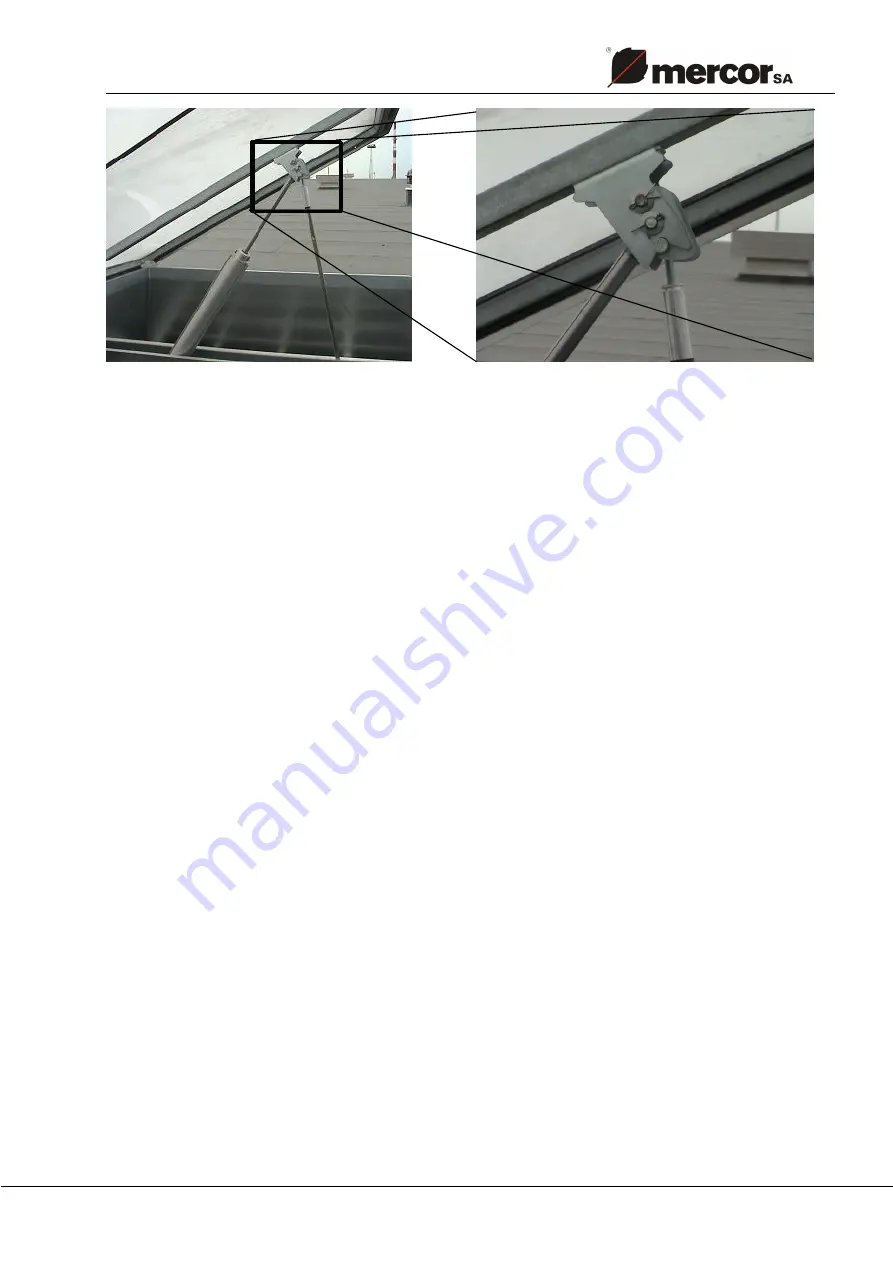
mcr-PROLIGHT vents
TYPE
:
DVP,
DVPS
O
PERATION AND MAINTENANCE MANUAL
Page 16 of 30
Fig. 23. Actuator - hook console joint
8. CONTROL
The functioning of smoke exhaust and smoke & ventilation vents is based on devices used
for controlling their opening and shutting. A set of such devices forms together a system for
smoke exhaust control or smoke exhaust and ventilation control. Depending on the
equipment used in it, the smoke exhausting control system may be offered in the following
variants:
• pneumatic system,
• electrical system,
• mechanical system.
Depending on the control method, mcr-PROLIGHT type DVP and DVPS flaps feature
pneumatic actuators with thermal triggers, electrical actuators or gas springs, and -
additionally - pneumatic and electrical actuators for controlling natural ventilation.
In the event of failure of the control that prevents the vent shutting, contact the service
department immediately (see point 11).
If the flap must be shut immediately, proceed with the following before the service
technicians arrive: disconnect the immobilized actuator from the leaf (e.g. disconnect the eye
bolt from the hook console, or undo the eye bolt from the actuator, or disconnect the actuator
from the cross-bar/console), then shut the leaf and secure it from opening.
8.1. Pneumatic control
Depending on the system's configuration, it may be necessary to connect additional
pneumatic piping to the vent (e.g. copper/steel tube from the alarm box containing
cartridges).
Threaded joints of pipe unions with valves, actuators, etc. must be sealed using appropriate
chemical agents, e.g. Loctite 243 (recommended) or Teflon tape, by winding it around the
thread. Apply several (2-3) drops of Loctite 243 per sealed thread. After screwing the
threaded joint together, Loctite 243 cures and seals the joint, securing it from uncontrolled
loosening (which is important for actuator connections). The loosening of a pipe joint secured
in such way is possible only using hand tools.





























